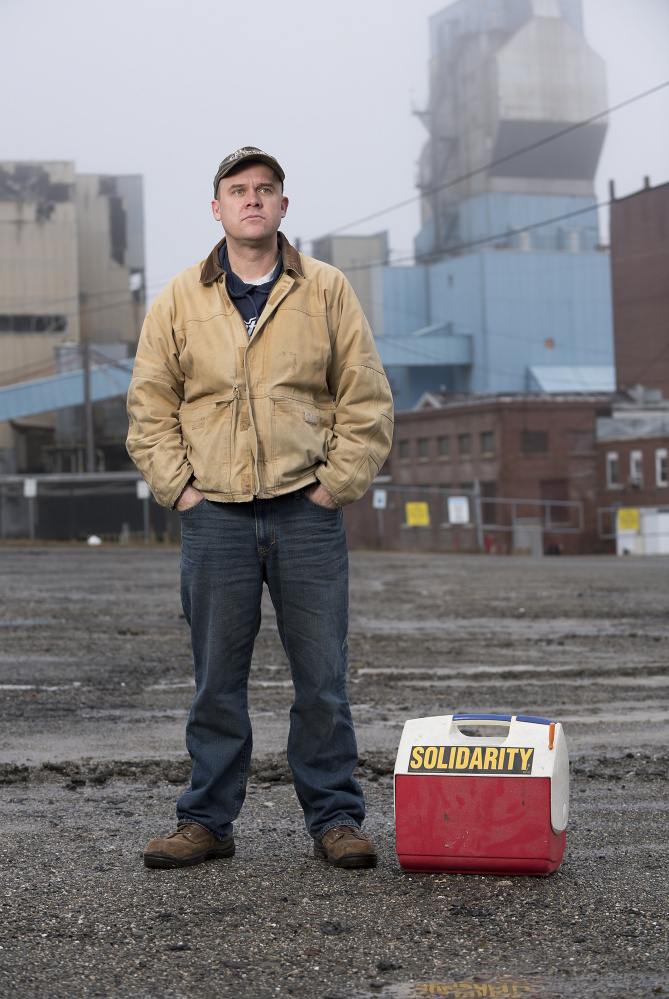Most parts of the state have started to recover from the recession, according to newly released information about poverty in each Maine county.
No turnaround has yet shown up in the poverty data from northernmost Maine, however.
The percentage of Mainers living in poverty in 13 Maine counties fell in 2014 after hitting their post-recession peak in the year or two before, according to the latest U.S. Census statistics.
But in Aroostook, Penobscot and Piscataquis counties, the poverty rates were still peaking as of last year, more than seven years after the start of the national recession.
The closure of paper mills and an aging population are some reasons for the delayed recovery, according to people who work with the poor in northern Maine.
Meanwhile, the coast is seeing an uptick in tourism and some rural areas have had growth in the agricultural industry that’s helping draw down the poverty rate.
The statewide poverty rate has leveled off after reaching a recent high of 14.4 percent in 2012. At 14 percent for the past two years, the state’s poverty rate is lower than the nationwide figure, which is 15.5 percent.
Although the cost of living varies throughout the country, the poverty line is set on a national level. An annual income of about $12,000 or less would place a single person below the poverty line. The poverty level is about $24,000 for a family of four, with some variations depending on the number of children in the household and whether the householder is over 65 years old.
Living in Lincoln, Jamey House manages to get by on his $338 weekly unemployment check, the equivalent of $17,576 a year. The 40-year-old single father of two was among the 200 people laid off from Lincoln Paper & Tissue in December 2013 – two months after he bought a house.
After about a year as a peer support worker, helping other laid-off mill employees get into school or apply for jobs, he took the opportunity to pursue the college degree he started after high school but never earned.
With a full course-load next semester, he’ll only need two more classes for a bachelor’s in business management. He thinks he’ll be close enough to finishing to start looking for work in the spring, probably in banking.
Even though House was among the people who made up Penobscot County’s 18 percent poverty rate in 2014 – and will count toward the same statistic in 2015 – he feels like he has come a long way from having to buy fuel in 5-gallon containers to keep his house warm in the winter.
“We survived,” he said. “I’ve got a light at the end of the tunnel now.”
Still, he has to think twice about buying a snack at the store. And he draws out of his 401(k) retirement fund to make house payments.
‘WORKING POOR’ ALSO STRUGGLING
People who were laid off aren’t the only ones struggling to stay out of poverty. In addition to the unemployed are the underemployed, the so-called “working poor,” whose low wages or lack of work hours – even sometimes with multiple jobs – keep them hovering around the poverty line.
Kara Hay, chief executive officer at Penquis, the Bangor-based community action agency, said the job growth there has been in the service sector, so people who have found employment after getting laid off from manufacturing jobs are often making a lot less than they had.
Recent college graduates are also struggling to find jobs that match their education level – and that can help pay off their student loans, Hay said. But even those who can cobble together a living by working a couple of part-time jobs are not putting anything away in savings.
“(They’re) one disaster, one event away from falling below the poverty line,” she said.
Gail Webb, 64, of Fort Fairfield knows exactly what it’s like to have tragedy strike while trying to stay afloat.
Webb had worked for 20 years as the business manager for a car dealership when the automotive industry collapsed at the start of the recession. Because most of her salary came from commissions, she couldn’t afford to keep working there.
“My income was slashed in half,” she said.
She got a job as an office manager for a construction company, but then hard times hit that industry, too, and she was laid off.
Like House, she decided to go back to school, pursued a degree from Northern Maine Community College in residential construction and had plans to become a housing inspector. Then, the month before she graduated, her grandchildren’s father died in a car accident, and her daughter asked her to become the legal guardian of the three girls.
Years earlier than she had planned, Webb started collecting Social Security benefits and lives off $1,100 a month, though the children get their own checks, too.
Still, she’s had to remodel her house to make room for the kids, ages 7 to 16, and a good chunk of her money has to go toward gas for taking them to school and appointments.
It’s been more than two years and things are starting to feel more normal for the kids. Once the oldest gets her driver’s license, Webb says she hopes she can start looking for a job.
“I am still hopeful that I can use my degree and work part time,” she said.
EFFECTS OF AN AGING WORKFORCE
Although the 2014 Census data show that Aroostook County, where Webb lives, had its highest poverty rate in years at 20.1 percent, the county’s community action program is seeing signs of a turnaround.
Between 2013 and 2014, fewer people applied or were eligible for heating assistance and home weatherization projects, said Jason Parent, the program’s executive director.
He said a bigger problem he’s seen is employers struggling to fill open positions because of the aging population and consequent shrinking workforce.
In Washington County, however, the aging population is seen as a possible reason for the improved poverty rate, because there are fewer families with young children, who tend to struggle, said Charles Rudelitch, executive director of the Sunrise County Economic Council.
The state’s easternmost county has also avoided layoffs at major employers, including the Woodland Pulp mill, which has been expanding its workforce, Rudelitch said.
Somerset County has similarly enjoyed stability among its bigger businesses, including paper mills in Skowhegan and Madison, New Balance and Backyard Farms.
Having that base has enabled the county to start to move in a positive direction from what growth there has been in utilities, crude manufacturing and farming, said Heather Johnson, executive director of the Somerset Economic Development Corp.
But even though the poverty rate is improving, it’s still a concern considering it’s over 17 percent, the fifth highest in the state, Johnson said.
The state’s inland counties tend to have the highest poverty rates, while they’re lower along the coast, with the exceptions of Washington, the most remote coastal county, which peaked at 21.7 percent poverty in 2011, and Kennebec, the home of the state capital in central Maine where the poverty rate has hovered around the state average for several years.
The southern coastal counties of York and Cumberland, the state’s hubs for business, would be the first to see job growth in the improving economy, said Ann Acheson, a research associate at the Margaret Chase Smith Policy Center in Orono.
STORIES OF PERSONAL ‘RECOVERIES’
Farther up the coast in Lincoln, Knox, Waldo and Hancock counties, there’s been an influx of well-off retirees, she said, which both draws down the poverty rate and helps the economy through their purchases and house projects.
And even though it’s only a seasonal impact, more people with expendable income coming from out of state has probably also helped these tourist destinations, she said.
“There’s definitely a sense of growth and development in Belfast these days,” Keith Small, executive director of Waldo Community Action Partners, said about the county seat.
Storefronts have filled up, there’s a shipyard that’s poised to expand and a Massachusetts-based technology company has moved into town with the potential for 350 new jobs.
Residents Bill and Heidi Littlefield went through their own personal recession and recovery.
After nearly 18 years working for the same lumber company, Bill Littlefield, 59, was fired two years ago after a customer made a complaint about how he delivered an order.
He didn’t qualify for unemployment, so he and his wife lived off his retirement savings and her Social Security benefits for half a year, until he got a job driving a tractor- trailer.
He was laid off five months later.
That left the Littlefields having to cut back on Christmas presents and only buying milk a half-gallon at a time.
Then, in July, he got a gig through a temp agency coating snowplows for Fisher Engineering in Rockland. A month ago, he got hired on by the company and is making $3 an hour more than when he was delivering lumber.
There is about a 30-mile commute for the 50-hour-a-week job, but that’s a small price to pay to be able to fill their grandchildren’s Christmas wish lists this year without falling behind on their bills.
“We have just less worry,” Heidi Littlefield said, “more peace of mind.”
Send questions/comments to the editors.






Success. Please wait for the page to reload. If the page does not reload within 5 seconds, please refresh the page.
Enter your email and password to access comments.
Hi, to comment on stories you must . This profile is in addition to your subscription and website login.
Already have a commenting profile? .
Invalid username/password.
Please check your email to confirm and complete your registration.
Only subscribers are eligible to post comments. Please subscribe or login first for digital access. Here’s why.
Use the form below to reset your password. When you've submitted your account email, we will send an email with a reset code.